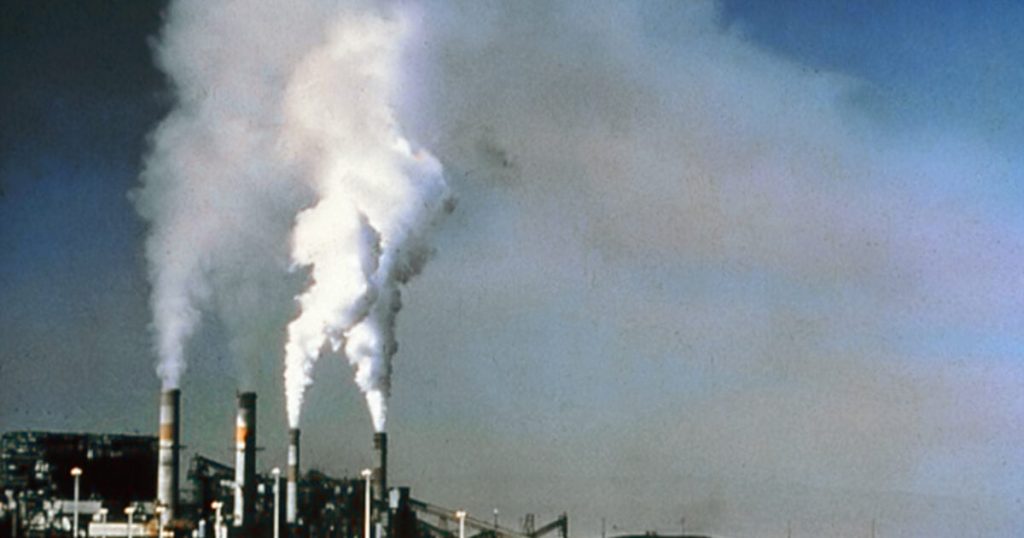NPS, Public domain, via Wikimedia Commons
Buying and selling carbon credits has become a great way for companies to signal their commitment to the environment, allowing them to keep polluting while also earning a profit on trading carbon credits.
If you pay a poor country not to cut down their forests, you can earn a lot of carbon credits. These credits can then be used to burn coal and produce more emissions. Whether the country actually planned to cut down the forest is irrelevant. Investigators have found that at least part of the carbon-neutral claims by airlines are backed by credits earned from preventing deforestation of forests that were never under threat.
The goal of most participants in the climate farce is not effectiveness. By writing a check, they can claim they just “saved” the world. Moreover, the amount of carbon credits they earn is not based on the money they spent, but on an estimate of how much pollution they supposedly averted.
Every year, China leads the world in coal consumption, burning 4,319,921,826 tons for everything from electricity generation to steel production. But it is deemed acceptable because China also plants a lot of trees and has created a market for trading carbon credits. China’s State Council Information Office assures us that “China’s sustained afforestation efforts green the world.” According to climate logic, China’s State Council is correct. By planting trees and establishing a market for tradable carbon credits, China has “signaled” its commitment to the environment. And signaling appears to be the new goal.
Carbon credits allow companies to meet Environmental, Social, and Governance (ESG) standards and virtue signal, without necessarily reducing global emissions. Meanwhile, these credits and environmental standards add costs to companies and countries that comply, while countries like China continue to emit pollutants and produce cheap products. Even Greenpeace agrees that carbon credits are a scam, calling them “greenwashing” and “window dressing.”
“Net zero” and “carbon neutral,” the mantras of the climate crowd, do not necessarily mean that companies stop producing emissions. These terms mean that companies balance their emissions by reducing what they can and buying enough carbon credits to offset the remaining pollution. However, there is no standard for how much they must reduce versus how much they should offset. So theoretically, they could offset 100% without reducing emissions at all.
In cap-and-trade systems, a government or regulatory body sets a cap on the total amount of greenhouse gases that can be emitted. Companies are issued a certain number of carbon credits and can trade them in a market. If a company emits less than its allotted amount, it can sell its excess credits to other companies that are exceeding their limits. Organizations can also purchase carbon credits voluntarily to offset their emissions.
When companies have already used up their credits but still need to create pollution, they can earn more carbon credits by planting trees, preventing deforestation, and developing wind, solar, or hydroelectric power to replace fossil fuels. Additionally, they can collect methane from landfills or agriculture to prevent its release into the atmosphere. These credits are often generated through projects that reduce or sequester greenhouse gases, such as reforestation, renewable energy projects, or energy efficiency improvements.
The irony of earning carbon credits by developing wind, solar, and alternative energy projects is that the company itself doesn’t need to switch to renewable energy. Instead, it can finance the installation of a windmill in a village in Bangladesh, thousands of miles away. There is no requirement that the village was previously burning coal or even had electricity. Furthermore, whether the village actually uses the windmill is not directly relevant. The company earns the credits based on the estimated amount of carbon emissions saved by the project, which is calculated and verified during the certification process. This certification can be done by a variety of institutions or organizations.
Carbon credits have faced criticism due to concerns about the proper verification of projects and the reality and permanence of the claimed reductions. Many of these reductions are highly subjective. For example, it is unrealistic to estimate the pollution that would have been created to power a village that did not previously have electricity.
There is generally no follow-up to see if the claimed reductions actually took place. As with taxes, accounting tricks can be used to exaggerate the amount of carbon reduction. However, unlike taxes, there is no overarching authority to audit the climate books. At the same time, do we really want an overarching authority with the power to audit and punish based on climate calculations?
Shell Oil became the target of international media when it was discovered they were playing a massive carbon credit shell game in China. Shell claimed thousands of credits for convincing Chinese farmers to use a carbon-saving farming method that about half of them had been using before the project even began. Even more comical was that the broker for these credits was PetroChina, a Chinese state-owned oil company. While numerous investigators and media have called these credits questionable, there is no mechanism in place to recoup the money Shell made in this process.
Ultimately, carbon credits incentivize the buying and selling of carbon credits, rather than reducing the amount of pollution companies produce. Shell is a classic example of this; the company now has a very lucrative business line of creating and selling carbon credits.
The post The Carbon Credit Scam: Financial Cost, Virtue Signaling, Little or No Environmental Benefit appeared first on The Gateway Pundit.






